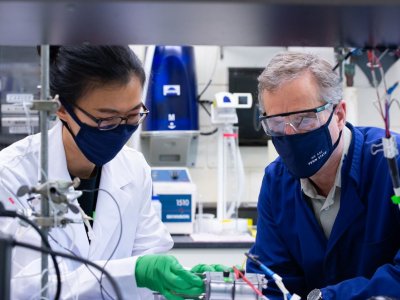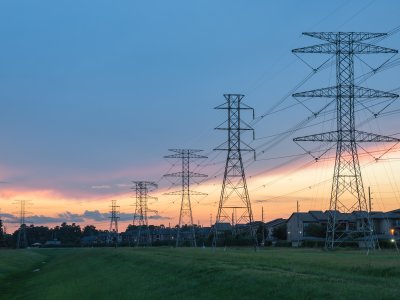Breathe in, and you consume oxygen. Breathe out, and you release carbon dioxide into the air. We know that burning fuels releases carbon dioxide, and our own “fuel,” or the food we eat, is no different. We capture the energy from the food we eat and then release the carbon from that food into the environment. On average, we eat about 2,000 calories a day and release about 2 pounds of carbon dioxide a day. Plants and trees use the energy in sunlight to take up carbon dioxide through their leaves and grow more biomass.
So how many trees are needed to take up the carbon dioxide we emit every day? The answer is about 15 trees for the carbon dioxide that a person releases based on the food they eat.
But the use of fossil fuels to produce food releases more carbon into the environment than just the carbon in the food that we eat. A lot more.
Getting food to our homes or restaurants takes a lot of energy, and most of that energy is currently provided using fossil fuels. The food system requires energy for many different steps, including making fertilizer or other chemicals added to the fields, plowing the fields, maintaining and harvesting the crops, processing what was grown to feed people or animals, and storing and transporting the food to its final destination. Adding up all these steps results in a lot more energy used than present in the food. In the US, we use about 25 times more energy to put food on the table than the energy content of the food itself.
To that total, add in carbon dioxide released from fossil fuels used for our other daily activities, such as gasoline used for driving our cars and electricity used for businesses, industries, and our homes. More fossil fuel use translates to more trees needed to take up that carbon dioxide.
If you add up all the carbon dioxide released for each person in the country based on our use of fossil fuels and calculate the number of trees you need to take up the carbon dioxide released, the total is equivalent to about 730 trees per person, or roughly 7 acres of forested land. The good news for Pennsylvanians is that we have a lot of trees in our state! Not that many, but perhaps enough to capture about 20% of that carbon dioxide under the right conditions.
To address climate change we need to reduce our fossil fuel energy use so that the carbon dioxide we release is more in line with what can be captured and stored naturally in the trees (and other biomass) and oceans. So, use less energy, especially gasoline for your car and energy for your homes, put up solar panels or buy green electricity, and plant more trees. You will be helping to do your part in reducing carbon dioxide emissions and addressing climate change.

About the Infographic: How many trees does it take to offset the food you eat? About 15 trees offset the carbon dioxide from consuming a 2,000-calorie diet. How many trees does it take to offset your fossil fuel consumption? About 730 trees offset the average carbon dioxide released for each person's fossil fuel usage.





